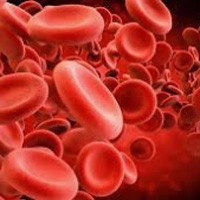Tag: coagulopathy

The Misunderstood Coagulopathy of Liver Disease
In patients with abnormal coagulation testing results in the setting of liver disease, INR and PT may be best used to provide the practitioner with information about the synthetic function of the liver but not to assess hemorrhagic... read more

Unsupervised Analysis of Transcriptomics in Bacterial Sepsis Across Multiple Datasets Reveals Three Robust Clusters
The three sepsis subtypes may represent a unifying framework for understanding the molecular heterogeneity of the sepsis syndrome. Further study could potentially enable a precision medicine approach of matching novel immunomodulatory... read more

Tranexamic Acid For Isolated Penetrating Head Trauma
An aeromedical crew was dispatched to a local emergency department to transport a fourteen year-old female with self-inflicted gunshot wound to the head to a tertiary pediatric trauma hospital. The patient was previously... read more

Ultrasound-guided Pleural Effusion Drainage With a Small Catheter Using the Single-step Trocar or Modified Seldinger Technique
Ultrasound-guided pleural effusion drainage by catheter insertion is a safe and effective procedure. The success rate is low when the effusion is loculated and septated. Both the trocar and the modified Seldinger techniques... read more

Severity of Sepsis-Associated Coagulopathy Predicts Hospital Mortality
atients with sepsis-associated coagulopathy appear to be at heightened risk of death, according to results of a large retrospective cohort study. The risk of death in the study increased with the severity of the sepsis-associated... read more

Haemostatic Resuscitation in Trauma: The Next Generation
The next generation of haemostatic resuscitation aims at applying a ratio 1:1:1 driven strategy while using antifibrinolytics, haemostatic monitoring and avoiding critical fibrinogen deficiency by substitution. Mortality... read more

Implementing Treatment Algorithms for the Correction of Trauma Induced Coagulopathy
The 5-year TACTIC project is a multi-component study, a main focus of which is the development of European-wide clinical trial, entitled "Implementing Treatment Algorithms for the Correction of Trauma Induced Coagulopathy... read more

Early Hemorrhage Control and Management of Trauma-induced Coagulopathy
Trauma resuscitation should focus on early goal-directed therapy with use of viscoelastic hemostatic assays while initially applying a ratio 1:1:1 driven transfusion therapy (with red blood cells, plasma and platelets) in... read more

Optimal Approach to Mechanical Ventilation After Cardiac Arrest
Return of spontaneous circulation after cardiac arrest results in a systemic inflammatory state called the post-cardiac arrest syndrome (PCAS), characterised by oxidative stress, coagulopathy, neuronal injury, and organ dysfunction.... read more








